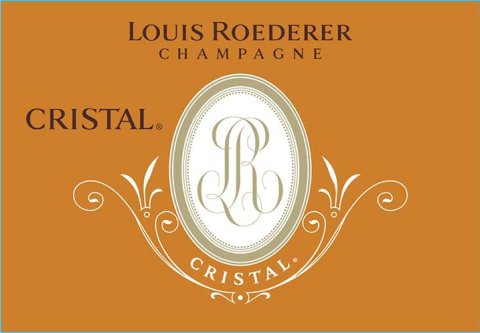Cristal Brut Louis Roederer/2014
Blend
60% Pinot Noir and 40% Chardonnay
Geographical Attributes
Associated with luxury, celebration, and romance, the region, Champagne, is home to the world’s most prized sparkling wine. In order to bear the label, ‘Champagne’, a sparkling wine must originate from this northeastern region of France—called Champagne—and adhere to strict quality standards. Made up of the three towns Reims, Épernay, and Aÿ, it was here that the traditional method of sparkling wine production was both invented and perfected, birthing a winemaking technique as well as a flavor profile that is now emulated worldwide. Well-drained, limestone and chalky soil defines much of the region, which lend a mineral component to its wines. Champagne’s cold, continental climate promotes ample acidity in its grapes but weather differences from year to year can create significant variation between vintages. While vintage Champagnes are produced in exceptional years, non-vintage cuvées are produced annually from a blend of several years in order to produce Champagnes that maintain a consistent house style. With nearly negligible exceptions, . These can be blended together or bottled as individual varietal Champagnes, depending on the final style of wine desired. Chardonnay, the only white variety, contributes freshness, elegance, lively acidity and notes of citrus, orchard fruit and white flowers. Pinot Noir and its relative Pinot Meunier, provide the backbone to many blends, adding structure, body and supple red fruit flavors. Wines with a large proportion of Pinot Meunier will be ready to drink earlier, while Pinot Noir contributes to longevity. Whether it is white or rosé, most Champagne is made from a blend of red and white grapes—and uniquely, rosé is often produce by blending together red and white wine. A Champagne made exclusively from Chardonnay will be labeled as ‘blanc de blancs,’ while ones comprised of only red grapes are called ‘blanc de noirs.’
Ratings
Wine Spectator 98.This vivid Champagne has upfront and linear definition, thanks to rapierlike acidity, with finely meshed flavors of ripe black cherry and mandarin orange fruit, raw almond, anise and cardamom spice as well as a touch of honeycomb, which all unfurl and expand on the fine, creamy palate. Sleek acidity continues through to the finish, with additional racy character provided by a streak of minerally saline and chalk, which gains momentum through the midpalate and rings out on the well-cut, lasting finish. Pinot Noir and Chardonnay. Drink now through 2040. Robert Parker 96.The 2014 Cristal is a terrific effort that transcends the vintage. Bursting from the glass with expressive aromas of ripe citrus fruit, nectarine, white flowers, freshly baked bread and subtle hints of honeycomb, it's medium to full-bodied, vinous and fleshy, with an exuberant core of fruit that's girdled by racy acids, resulting in a wine that's simultaneously chiseled and demonstrative, meaning that early appeal doesn't come at the expense of the requisite tension for long-term cellaring. Concluding with a long, aromatic and intensely chalky finish, it is a brilliant Champagne that will offer a broad drinking window. This bottle was disgorged in June 2021 with seven grams per liter dosage. Wine Enthusiast 97.Still young, with toast aromas and shining white-fruit flavors, the latest release of Cristal is just setting out. A dry, tight core of intense flavors are shot through with minerality from the pure chalk soil of the 45 individual parcels in the blend. James Suckling 97.An enlightened expression from a season of extremes, this has intensity, ripeness and depth of fruit that is underpinned by chalk soil-derived structure and freshness. Complex nose with lemon and grapefruit aromas, as well as closed red apple, blood orange, light biscuit spices and toasted hazelnuts. Super fresh. The palate starts pithy and fleshy with pink grapefruit, blood orange, red apple, sliced strawberry and nectarine. Expansive and mouth-filling build that is driven by concentrated fruit, Then it tightens and turns to a more mineral edge, before smoothly honed phenolics finish it long. It is 60% pinot noir and 40% chardonnay, 32% oak fermentation in those same proportions, no chaptalization, no malolactic and a dosage of 7g per liter. From organically farmed grapes. Very complex, it strikes a natural balance and is very drinkable already, though will develop well for more than a decade in the cellar.



